Nissan GT-R reborn as 1341bhp EV with solid-state battery
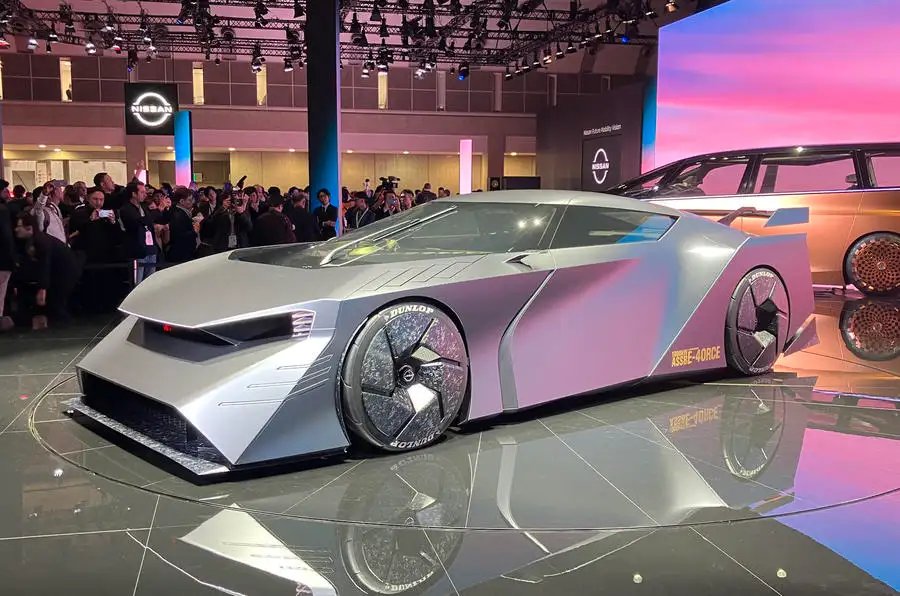
The dramatic concept car is billed by Nissan as its “vision for a next-generation all-electric high-performance supercar”, and is one of five launched by the brand under the ‘Hyper’ banner at the returning motor show in Tokyo as it looks to preview its next-generation of electric cars.
Tantalisingly, the Hyper Force confirms Nissan’s intentions that the GT-R will have a place in its line-up in the future; Nissan plans to offer a full range of models from small EVs to performance cars, in a bid to give customers the same choice as in the combustion era - and Autocar understands it could go on sale by the end of the decade.
“We want to provide choice for customers,” said Nissan CEO Makoto Uchida when asked by Autocar why Nissan was showing so many new concepts at once.
“We’re an EV pioneer and this is what we want to do. People’s expectations change and they don’t look at vehicles as before and in their needs and lives. We’ll hear from customers what they think about them [the concepts]. This is giving a look at our future plans. All concepts, we’d like to deliver. We need the customers to agree.”
The Hyper Force is four-wheel drive and has a power output of 1000kw - a remarkable 1341bhp. The all-wheel drive system is badged E-Force, as with Nissan’s other four-wheel drive EVs, yet whereas they are twin-motor systems it is not known whether the Hyper Force uses two or four motors.
One key technical detail confirmed about the concept car is its use of solid-state battery technology, long considered to be a potential game-changer for EVs in being able to offer smaller, lighter and more power dense batteries that are quicker to charge.
The Japanese firm plans to have its pilot plant for solid-state battery production up and running in 2024, and the batteries in mass-production by 2028. The next GT-R is earmarked for the technology and is tipped to enter production in 2028 or 2029 as a trailblazer for what solid state batteries can do and the models they allow.
The Hyper Force concept features a lightweight body with carbon fibre used in its construction. Nissan says that this body, combined with “powerful downforce” and the advanced control of the E-Force all-wheel drive system allows for “enhanced cornering and exceptional handling on circuits and winding roads”.
No dimensions have been released by Nissan but the concept is large, most likely in excess of five metres long and two metres wide. The aerodynamics of the car were developed and designed in conjunction with Nissan’s performance arm Nismo. As well as providing “high” aerodynamic and downforce performance, the body design also substantially contributes to cooling performance to allow the concept to be driven harder for longer.
Some of the features of the body include a dual-level diffuser at the rear, active front winglets, fender slips and rear wing ends, and a plasma actuator that is said to suppress air detachment to maximise grip and minimise inner-wheel lift while the car is cornering.
The design has little in common with the current GT-R, which by the time this next-generation model enters production will be two decades old, but there are nods to the legendary Skyline lineage with the design of the front and rear headlights. The wheels are made from lightweight carbonfibre, in a design which improves aerodynamic efficiency while providing better cooling for the brakes.
There are two driving modes offered on the concept car: R and GT, standing for racing and grand touring respectively. The interior lighting and displays change colour based on what mode is selected (red for R and blue for GT) and different information is displayed to the driver. The graphics inside have been developed with Polyphony Digital Inc, the maker of the Gran Turismo video game franchise - which designed the graphics for the infotainment in today's GT-R.
The interior layout, which features carbonfibre seats, also changes in the different driving modes. In R mode, the interior panels move closer to the driver to give the feel of a racing cockpit and four screens give different driving information such as pressures and temperatures. The GT mode gives more traditional infotainment displays.
A full suite of automated driving functions are offered on the concept car, with Nissan saying they have been “tuned for sports driving” and will even provide extra safety functions on a circuit.
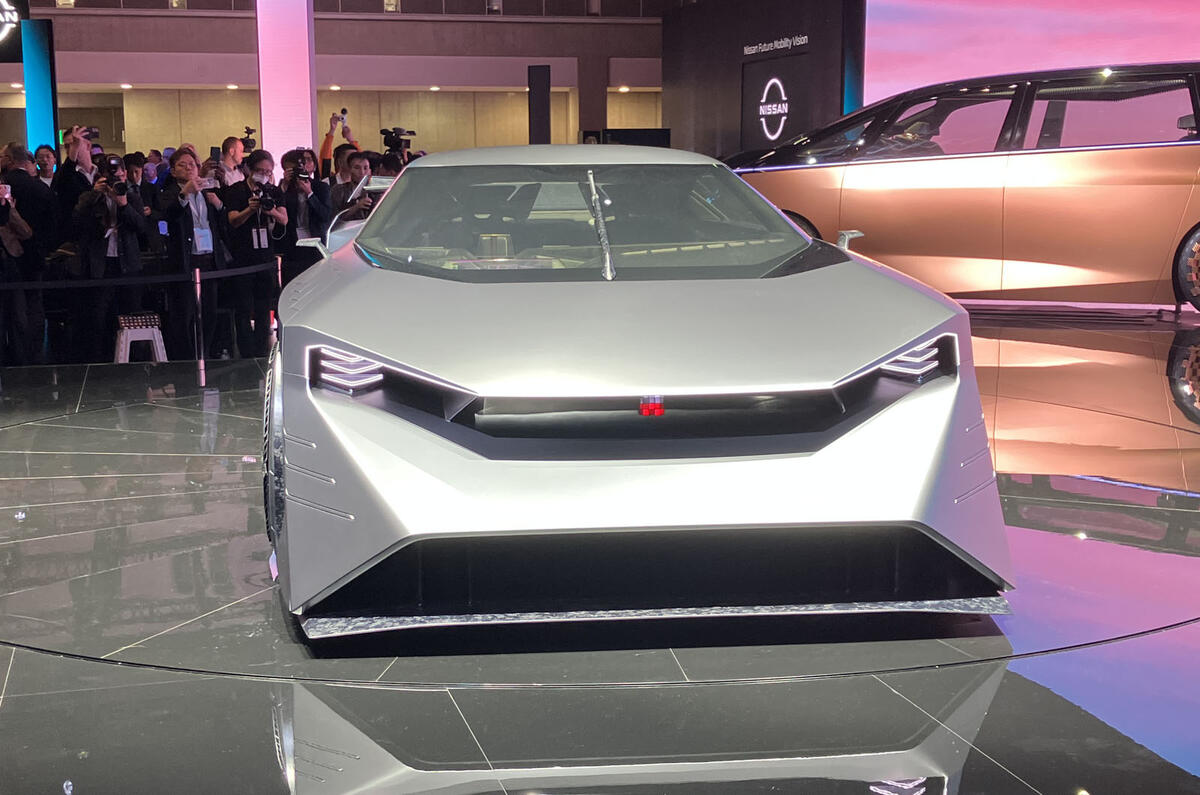
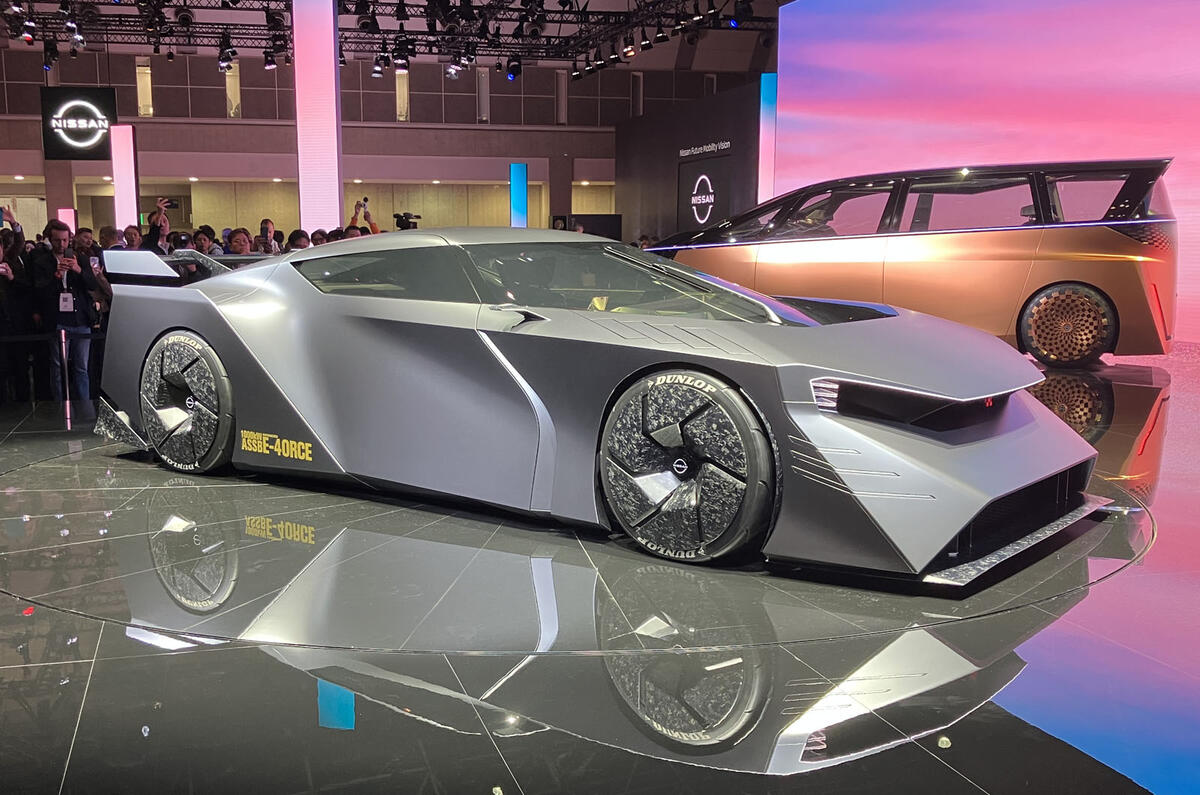
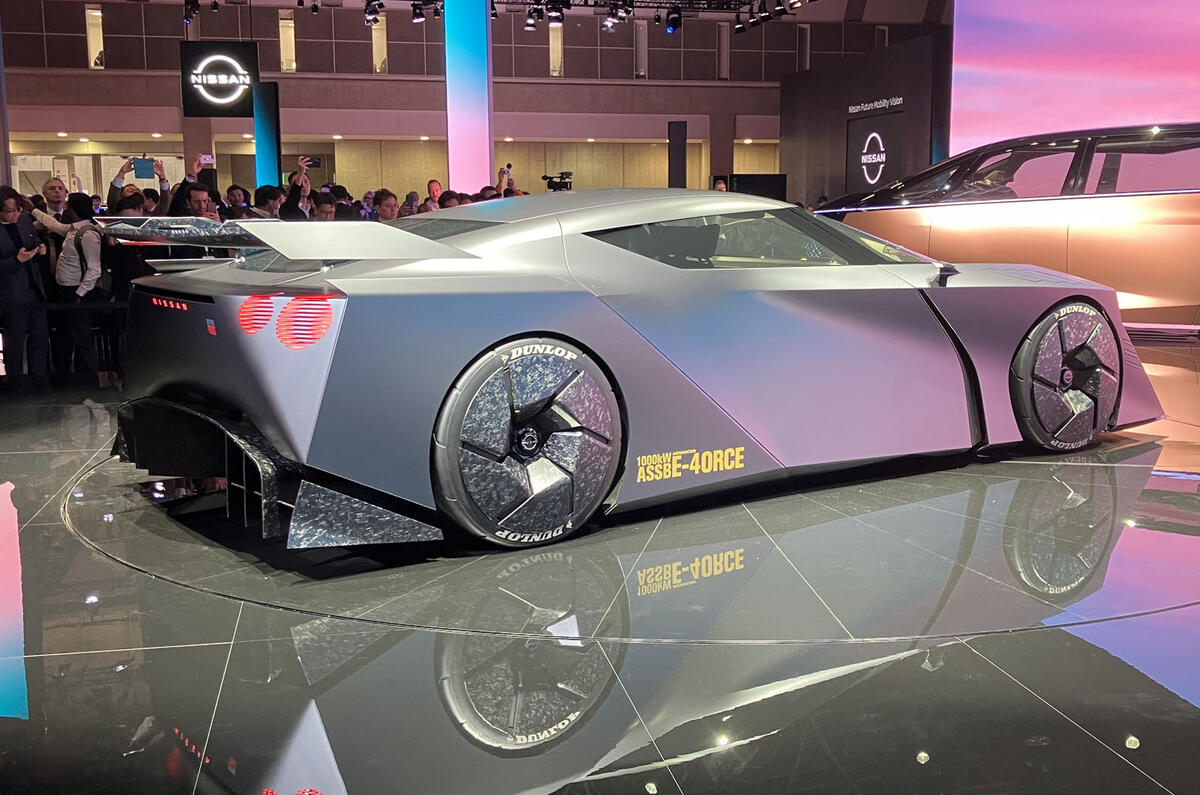
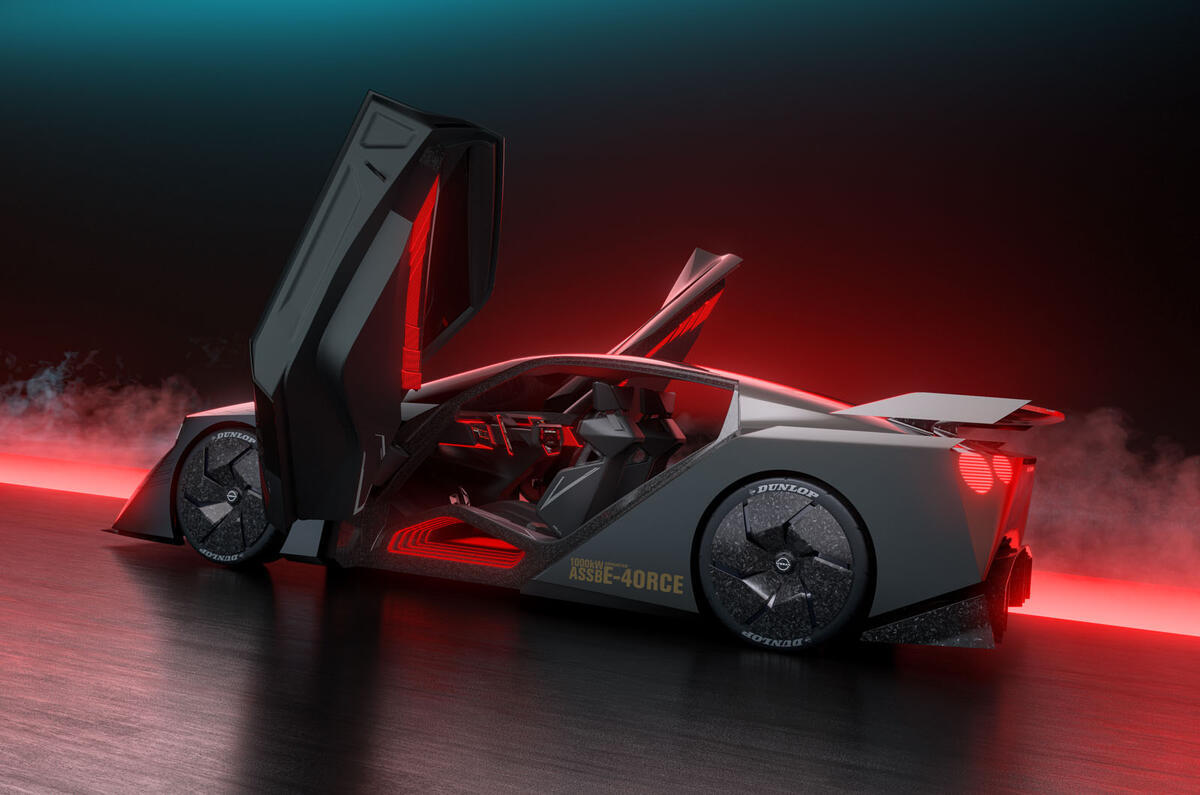
Related News


